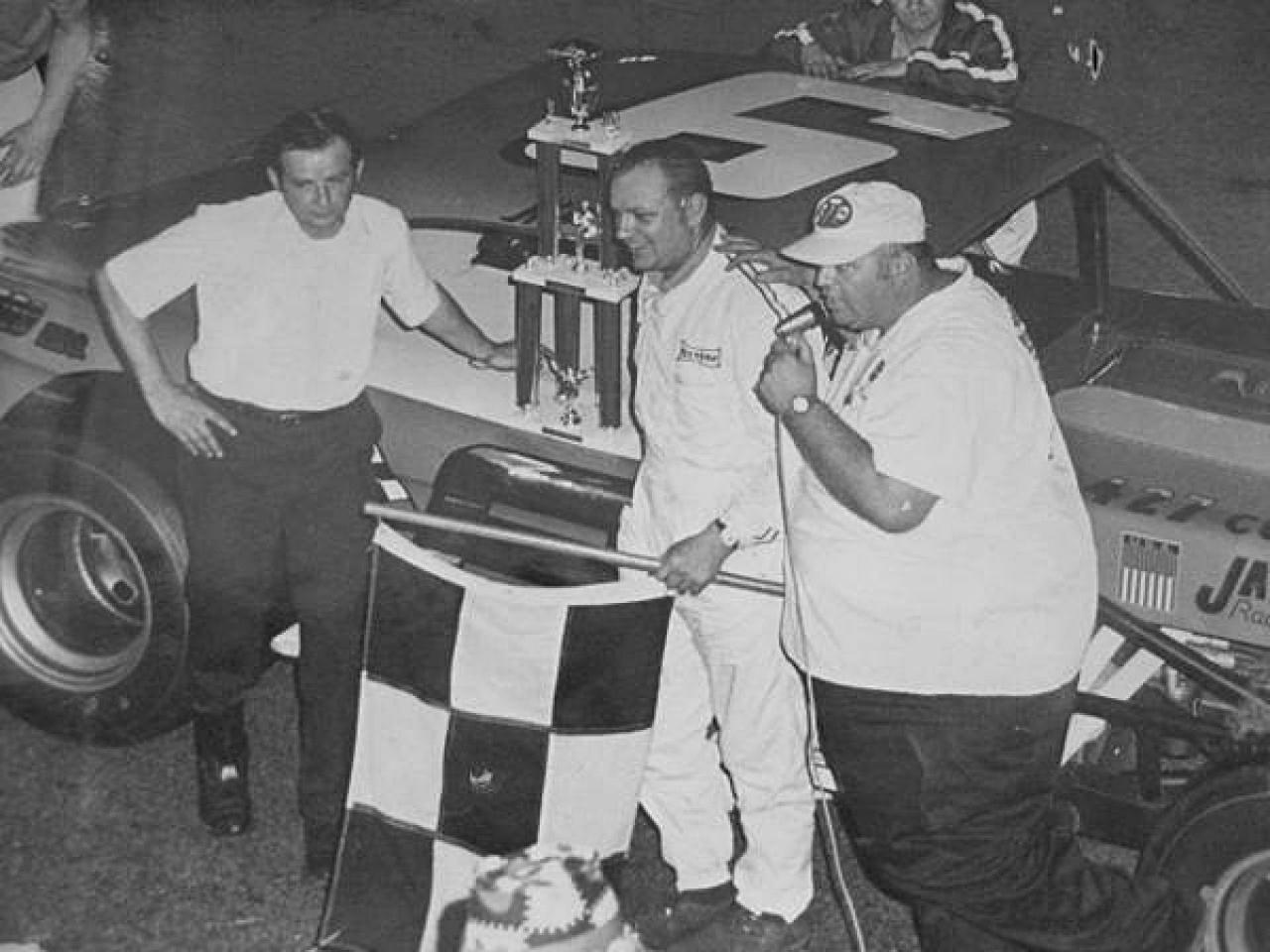Ralph and Dale
Ed Serwacki Gone Rip Obit Attached

Nov. 25, 2010
If you knew the Mods in the NE From 59 to 75 you knew Ed
Edward “Eddie” Serwacki
July 24, 1925 – Nov. 24, 2010
By John Bisci, Public Relations Manager, Las Vegas Motor Speedway
Another chapter in the Northeast’s rich short-track racing history has come to a close. Lancaster (N.Y.) Speedway owner-promoter Edward “Eddie” Serwacki passed away at age 85 on Wednesday, Nov. 24 after an 18-year battle with Alzheimer’s disease.
In its heyday, during Serwacki’s reign, Lancaster played host to some of the biggest names – and races – in the sport.
The son of Polish immigrant parents, Ed owned and operated Clinton Collision on Buffalo’s East Side after he was released from military service.
Although Ed is often is referred to as the father of Lancaster Speedway (now Dunn Tire Raceway Park), he was not the original owner. He was, however, its most visible and popular front man – and a driving force in its growth, status and popularity in the 1960s.
I had the opportunity to interview Ed for a feature story in Trackside Magazine in 1990. The retired body-and-fender man was meticulously restoring a wrecked minivan in a rented barn in Lockport, N.Y. Once finished, it was to be sold as a used car but Ed was laboring over it as though he was restoring a classic automobile.
“Retirement is for the birds,” Ed began. “I gotta stay active. This keeps me young.”
Ed took a break from his project, wife Shirley provided some homemade cookies and my tape recorder hummed as Ed spun his fascinating tale.
“I was one of the 11 original partners. They picked a heck of a location (adjacent to the N.Y. State Thruway, at Exit 49, not far from Buffalo). They needed more money so they offered shares. Not long after the track opened in 1959, I was in a Memorial Day bowling tournament in Albany. Steve Bartell owned a bowling alley in Buffalo and was one of the partners in the speedway. Steve asked, ‘How’d you like to be a partner in Lancaster Speedway?’ My visions were Daytona, you know, or Indianapolis – a speedway is a speedway. I used to go to Civic Stadium (Buffalo’s old War Memorial Stadium) and Johnny’s Speedway (N. Collins, N.Y.) once in a while, but not a lot.
“He said it wouldn’t cost a lot of money. Famous last words, right?”
Over the years, Eddie wore many hats at the half-mile dirt Lancaster oval, including those of race director, construction foreman, maintenance man, promoter and announcer.
“In 1963, things were tough. I had mortgaged our house and the garage. We were making payments each month on the land and the track. It cost us about $22,000 each to be partners back then, but it didn’t start out that way. It was supposed to be $200 a month. We wanted lights, we wanted a drag strip, we wanted to pave the track (it was paved late in 1963). Even then, those things cost a lot of money. We were trying to run Wednesdays and Saturdays, you know, trying to do anything we could.
“Somewhere along the line I got into a pretty decent argument with the other partners and I walked out in ’63, right near the end of the season. They ran without me in ’64 – about five or six races – then closed it. I came back in ’65 and leased it with my brother Matt. We went to the bank and borrowed $5,000 against my collision business. That was my bankroll to get it going. We got our money back in ’65 – broke even that year. And then in ’66, things started to gel and it turned out to be a good year. We didn’t make a lot of money, but we were starting to build. Attendance was up and so were car counts. We had 32 or 34 cars all the time.
“In the beginning, my wife would have to count the people coming in the gate to make sure we had enough money to cover the purse, while I had to count the cars to make sure we had enough to put on a show for the people!
“It got better in ’67 and I started the big race.”
The big race began as twin 50-lap Modified features in 1967 and evolved into the spectacular Amalie Pro 350 in 1971.
“In ’69, ’70, it started to get a
